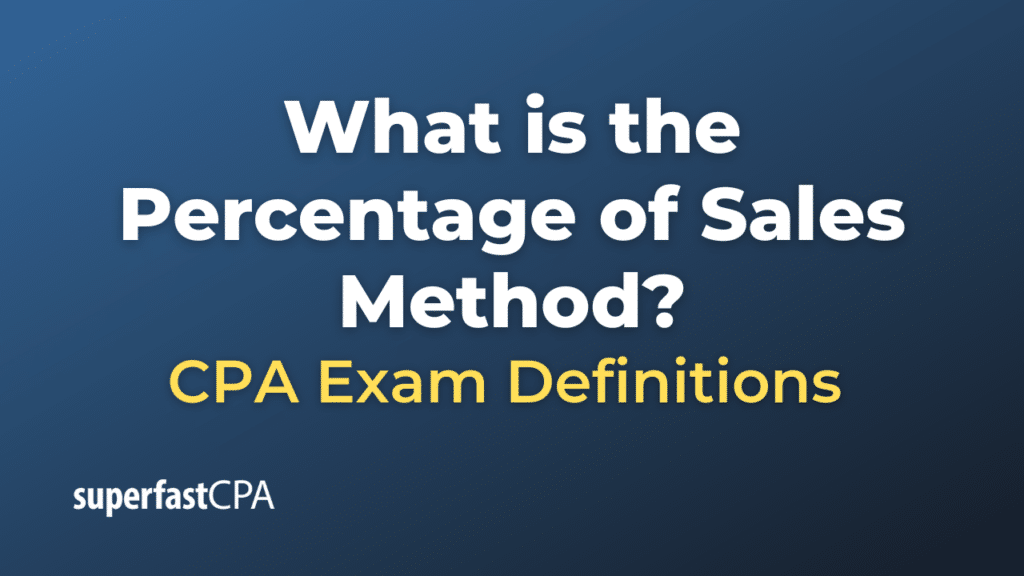Percentage of Sales Method
The percentage of sales method, also known as the income statement approach, is a technique used in accounting to estimate bad debts (uncollectible accounts) expense. This method focuses on the income statement and its relationship to accounts receivable.
Under the percentage of sales method, a company will determine a fixed percentage of its total credit sales for the period, based on historical data and management’s judgment, to estimate the bad debts expense for the period. The chosen percentage represents the portion of credit sales that the company does not expect to collect.
Here’s the general formula:
Bad Debts Expense = Total Credit Sales * Bad Debt Percentage
For example, if a company has $500,000 in credit sales for the year and estimates that 1% of these sales will be uncollectible, it will recognize $5,000 (500,000 * 1%) as bad debts expense on its income statement.
It’s important to note that this method doesn’t adjust the balance in the allowance for doubtful accounts on the balance sheet. This can result in a disconnect between the income statement and balance sheet when it comes to the treatment of accounts receivable and bad debts. For this reason, many companies prefer to use the percentage of receivables method (or aging of receivables method) which provides a more accurate estimate of net accounts receivable.
Example of the Percentage of Sales Method
Let’s say we have a company named Electronics Inc. that sells its products on credit. Based on its past experiences and knowledge of its customers, the company estimates that 2% of its credit sales will not be collectible.
For the fiscal year, Electronics Inc. made $1,000,000 in credit sales.
Here’s how the company would calculate its bad debt expense using the percentage of sales method:
Bad Debts Expense = Total Credit Sales * Bad Debt Percentage
Bad Debts Expense = $1,000,000 * 2%
Bad Debts Expense = $20,000
So, Electronics Inc. would record a bad debt expense of $20,000 on its income statement for the year.
In terms of the journal entry, Electronics Inc. would debit (increase) Bad Debt Expense by $20,000 and credit (increase) Allowance for Doubtful Accounts (a contra asset account that goes against Accounts Receivable on the balance sheet) by $20,000.
This entry reflects the company’s expectation that $20,000 of its accounts receivable is unlikely to be collected.
Keep in mind, this is an estimation method. The actual amount of bad debts may differ from the estimated amount. If the company finds that its actual bad debts are consistently higher or lower than its estimates, it might need to adjust the percentage it uses in this calculation.













